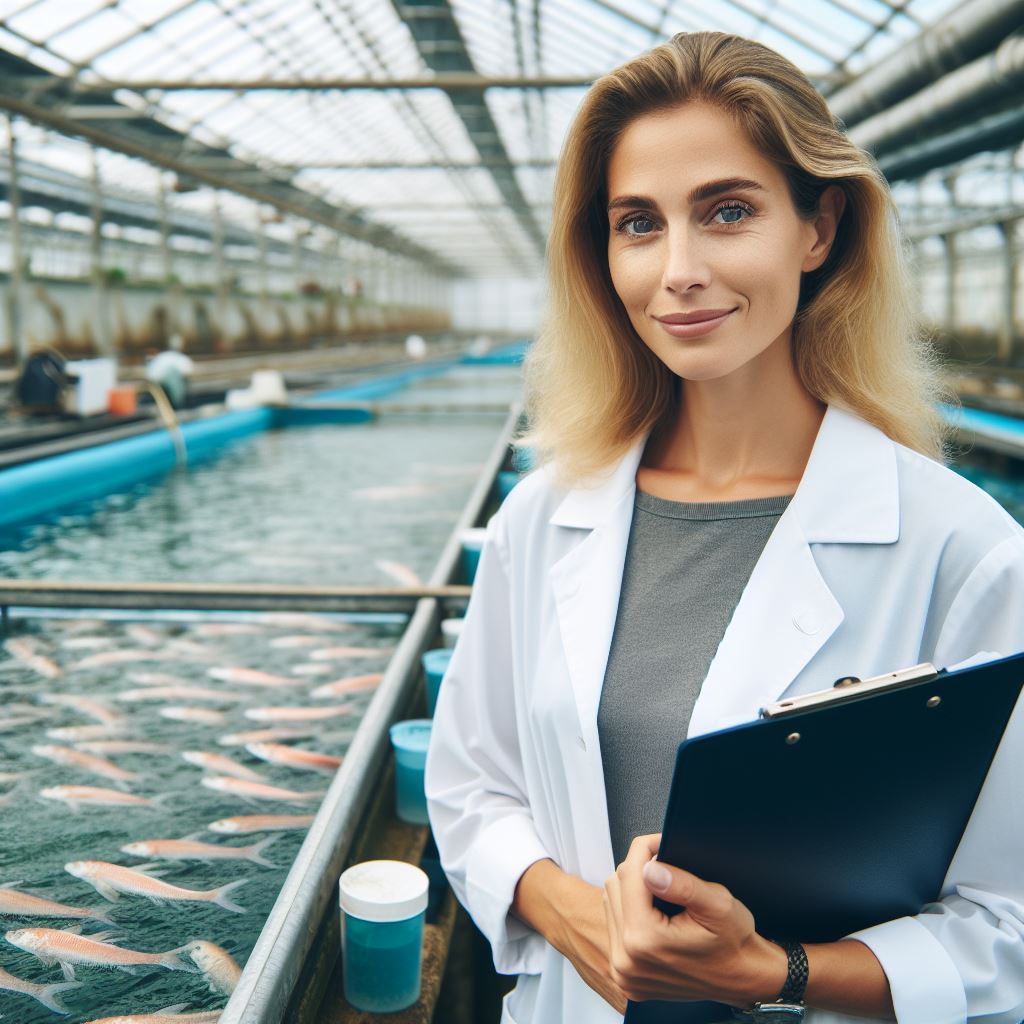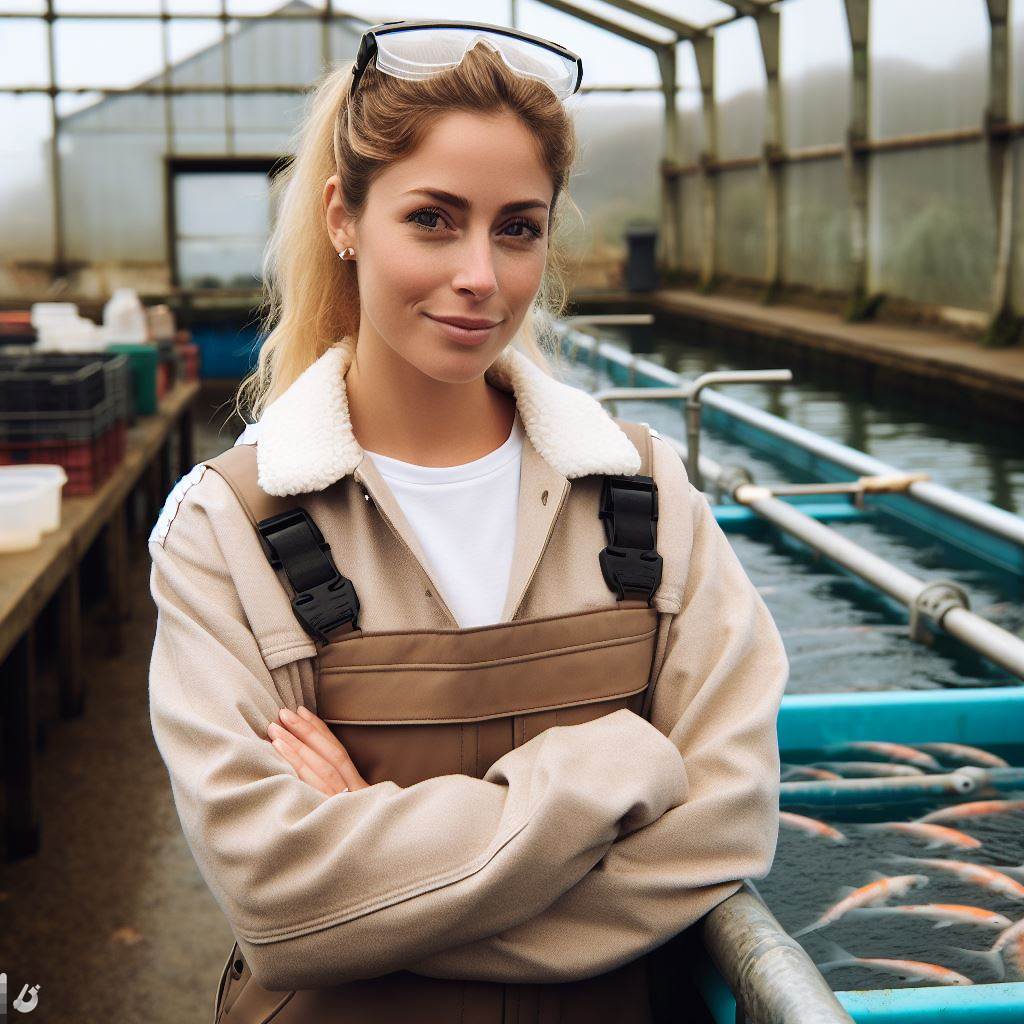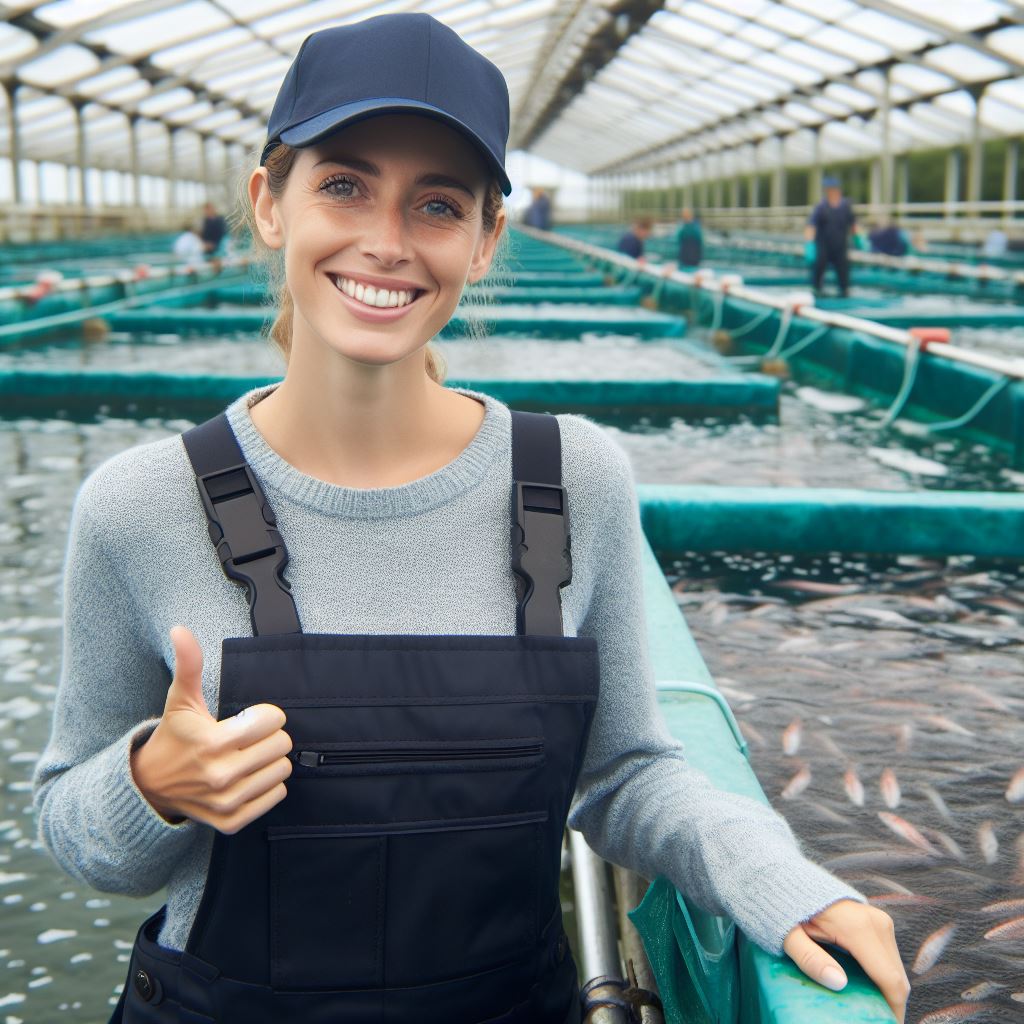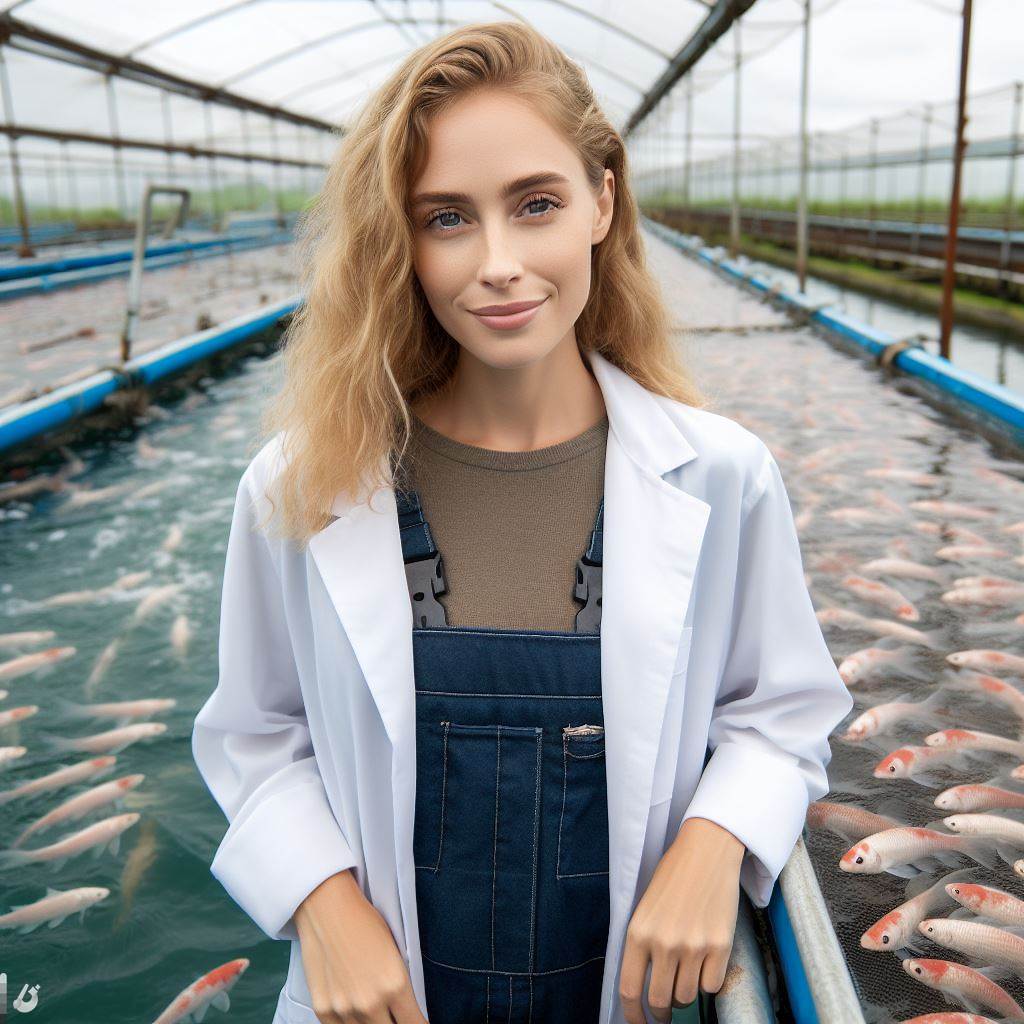Introduction
Aquaculture refers to the farming of aquatic organisms such as fish, shellfish, and plants for various purposes such as food production, conservation, and research.
In the UK, the aquaculture industry plays a significant role in meeting the demand for seafood and supporting coastal communities.
Species diversity is crucial in aquaculture as it helps to maintain ecological balance, reduce disease risks, and enhance overall resilience.
By cultivating a wide range of species, the industry can reduce the reliance on a single species and mitigate potential economic and environmental risks.
Moreover, species diversity in aquaculture promotes sustainable practices by preserving genetic diversity and minimizing negative impacts on wild populations.
Different species have unique traits and tolerance to environmental conditions, allowing the industry to adapt to changing climate and market demands.
Species diversity also provides opportunities for niche markets, offering consumers a wider choice of sustainably farmed seafood options.
UK aquaculture tech emphasizes the importance of species diversity to ensure a resilient and sustainable industry.
Types of Aquaculture Systems in the UK
Open systems
- Definition and characteristics: Open system aquaculture refers to the practice of farming aquatic organisms in natural bodies of water.
- Examples of open system aquaculture in the UK: Salmon farms located in sea cages, where fish are raised using seawater.
Closed systems
- Definition and characteristics: Closed system aquaculture involves cultivating aquatic organisms in controlled environments, typically tanks or land-based facilities.
- Examples of closed system aquaculture in the UK: Recirculating aquaculture systems (RAS) that utilize advanced filtration techniques to recycle water and maintain optimal conditions for fish growth.
Read: Aquatic Health Management by UK Experts
Commonly Cultivated Fish Species in UK Aquaculture Tech
Atlantic salmon
1. Description and characteristics
Atlantic salmon, also known as Salmo salar, is a species of fish found in the eastern and northern Atlantic Ocean. They have a silvery body with black spots and a streamlined shape.
2. Cultivation methods and techniques
Atlantic salmon are commonly cultivated in sea cages or net pens installed in coastal waters.
These facilities provide controlled conditions for the fish, including water temperature, oxygen levels, and feeding.
3. Economic and environmental impact
The cultivation of Atlantic salmon has a significant economic impact on the UK aquaculture industry.
The fish are highly valued for their meat, which is sold locally and exported.
The industry must address concerns about water pollution and the escape of farmed fish.
Personalized UK Career Consulting
Receive tailored career guidance designed just for you. Get actionable steps and expert support to boost your career in 1-3 days. Take control of your career now.
Get StartedRainbow trout
1. Description and characteristics
Rainbow trout, also known as Oncorhynchus mykiss, are native to North America but have been introduced to many countries, including the UK.
They have a distinctive pinkish-red stripe along their sides and a streamlined body shape.
2. Cultivation methods and techniques
Rainbow trout are commonly cultivated in freshwater facilities such as ponds or raceways.
These facilities can be either flow-through or recirculating systems, providing a constant supply of clean water and controlled conditions for the fish.
3. Economic and environmental impact
The cultivation of rainbow trout contributes to the UK aquaculture industry by providing a sustainable source of high-quality fish.
The industry must manage waste and prevent the spread of diseases to wild populations.
European sea bass
1. Description and characteristics
European sea bass, also known as Dicentrarchus labrax, is a popular species among commercial and recreational fishermen. They have a silver-grey body with dark lateral stripes and a streamlined shape.
2. Cultivation methods and techniques
European sea bass can be cultivated in both freshwater and marine facilities.
In the UK, sea bass aquaculture primarily focuses on cultivating juveniles in land-based systems before transferring them to sea cages for grow-out.
3. Economic and environmental impact
The cultivation of European sea bass contributes to the UK aquaculture industry by meeting the demand for this highly valued fish.
However, the industry faces challenges related to limited space in coastal waters and the need to minimize environmental impacts.
In fact, Atlantic salmon, rainbow trout, and European sea bass are among the commonly cultivated fish species in UK aquaculture.
Each species has its unique description, cultivation methods, and economic and environmental impacts.
The UK aquaculture industry must continue to develop sustainable practices to ensure the long-term success and environmental viability of fish farming.
Your Dream Job Starts with a Perfect CV
Get a tailored CV and cover letter that captures your unique strengths and stands out in your industry. Let us help you make an unforgettable first impression.
Get StartedRead: Aquaculture Law: UK Regulations Explained
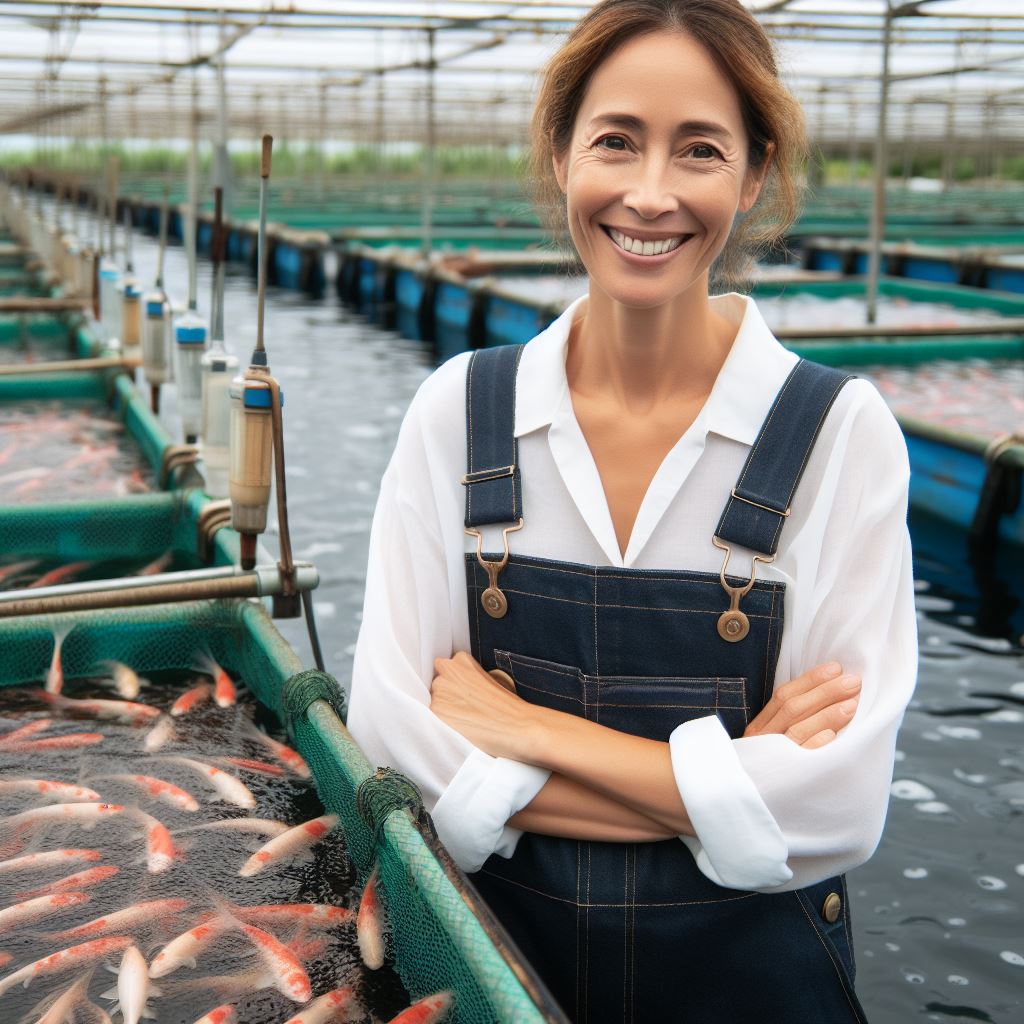
Importance of Species Diversity in UK Aquaculture
Benefits of cultivating multiple species
- Reducing disease risks
- Enhancing ecosystem resilience
- Expanding product offerings
Challenges and considerations in species diversification
- Environmental factors
- Market demand and consumer preferences
- Technical feasibility
Read: Aquaculture in the UK: Education Pathways
Learn More: Forestry Apprenticeships in the UK
Innovations and Advancements Promoting Species Diversity
Genetic Selection and Breeding Programs
- Enhancing desired traits in different species through genetic selection and breeding programs.
- Maintaining genetic diversity to ensure the resilience and adaptability of aquaculture species.
Integrated Multi-Trophic Aquaculture (IMTA)
- Creating symbiotic relationships between species to maximize productivity and minimize environmental impact.
- Maximizing resource efficiency by utilizing the waste products of one species as inputs for another.
Aquaponics Systems
- Combining aquaculture with hydroponics to create a sustainable and symbiotic system.
- Utilizing fish waste as natural fertilizers for plant cultivation in the aquaponics system.
Species diversity in UK aquaculture technology is being promoted through various innovations and advancements.
These strategies focus on genetic selection and breeding programs, integrated multi-trophic aquaculture (IMTA), and aquaponics systems.
Genetic Selection and Breeding Programs
1. Enhancing desired traits in different species
Genetic selection and breeding programs play a crucial role in enhancing desired traits in different species.
Through careful selection and controlled breeding, aquaculture farmers can improve the growth rates, disease resistance, and overall performance of their fish stocks.
By selecting individuals with favorable traits and allowing them to reproduce, the offspring inherit these beneficial characteristics.
2. Maintaining genetic diversity
In addition, maintaining genetic diversity is equally important in aquaculture.
By avoiding over-reliance on a limited number of genetically similar individuals, farmers can increase the resilience and adaptability of their fish stocks.
Genetic diversity helps prevent the vulnerability of the aquaculture species to diseases, environmental changes, and other potential threats.
Integrated Multi-Trophic Aquaculture (IMTA)
1. Creating symbiotic relationships between species
Integrated multi-trophic aquaculture (IMTA) is a system that aims to create symbiotic relationships between different species.
In an IMTA setup, multiple species are farmed together, each occupying different ecological niches and contributing to the overall system’s productivity.
2. Maximizing resource efficiency and minimizing environmental impact
IMTA maximizes resource efficiency by utilizing the waste products of one species as inputs for another.
Optimize Your LinkedIn for Success
Boost your LinkedIn profile with a professional bio, keyword-rich headline, and strategic recommendations that attract recruiters. Stand out from the crowd and get noticed.
Optimize NowFor example, the nitrogen-rich waste from fish farming can be absorbed by seaweeds or shellfish, which serve as natural filters.
These organisms, in turn, remove excess nutrients from the water, improving water quality and minimizing the environmental impact of aquaculture operations.
Aquaponics Systems
1. Combining aquaculture with hydroponics
Aquaponics systems combine aquaculture with hydroponics, creating a sustainable and mutually beneficial system.
In aquaponics, fish are raised in tanks, and the nutrient-rich waste they produce is used as fertilizer for cultivating plants in a soil-less environment.
2. Utilizing fish waste as fertilizers for plant cultivation
The fish waste provides essential nutrients for plant growth, while the plants help filter and purify the water for the fish.
This closed-loop system eliminates the need for synthetic fertilizers or excessive water usage, making aquaponics a highly sustainable method of food production.
Lastly, advancements in aquaculture technology have opened doors for promoting species diversity in the UK.
Genetic selection and breeding programs, integrated multi-trophic aquaculture (IMTA), and aquaponics systems are innovative methods that enhance productivity while minimizing environmental impact.
By harnessing these innovations, the future of UK aquaculture looks promising in terms of species diversity and sustainable practices.
Read: Sustainable Practices in UK Aquaculture Tech
Conclusion
Species diversity in UK aquaculture is paramount. The array of aquaculture systems and fish species discussed showcases the sector’s versatility.
Technology and innovation play pivotal roles in fostering sustainable and diverse practices.
Embracing these advancements is key to the industry’s success and ecological balance.
As we reflect on the discussed topics, it’s evident that a harmonious coexistence between nature and technology is the way forward.
Let’s embark on this journey, leveraging innovation to propel UK aquaculture into a future marked by ecological resilience and abundance.
Together, we can shape a thriving aquatic ecosystem that not only sustains us but also contributes to the global effort for responsible and diverse aquaculture practices.
[E-Book for Sale]
500 Cutting-Edge Tech Startup Ideas for 2024 & 2025: Innovate, Create, Dominate
$19.99 • 500 Tech Startup Ideas • 62 pages
You will get inspired with 500 innovative tech startup ideas for 2024 and 2025, complete with concise descriptions to help you kickstart your entrepreneurial journey in AI, Blockchain, IoT, Fintech, and AR/VR.

